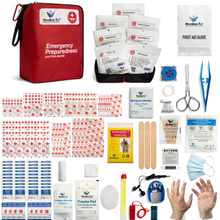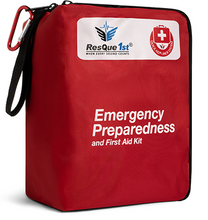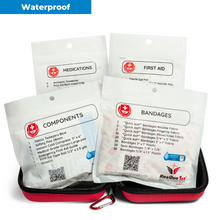Every day somebody, somewhere, needs first aid. You know you should keep a good first aid kit on hand, but how do you know which is right for your needs? No two kits are the same. They’re all different. Some are good for basic cuts, scrapes, burns and such, while others are more elaborate. How do you know which one you should have?
When you understand the first aid kit differences out there, you can choose the right match for your needs.
Certification
The biggest difference in first aid kits is if they are certified or not. Buy a kit that meets OSHA and ANSI standards (Occupational Health and Safety Act and the American National Standards Institute.) Avoid any kit that is not certified.
ANSI approved kits are separated into Class A and Class B. Class A is for common injuries in a workplace and Class B is for more serious and complex problems.
A Basic Kit for Cuts, Scrapes and Minor Issues
You can find key differences in first aid kits in their intended purposes. A basic kit should be in your bathroom at home, or the kitchen, for treating simple problems like small cuts, scrapes, burns, bumps, bruises,even headaches and nausea. A kit like this is inexpensive, small, portable, and refilled easily. It will contain bandages, salves, aspirin, gauze, cleansing wipes, antiseptic ointment, maybe even a cold pack.
This is the kind of kit you may want to keep in your backpack when out and about. Great for hiking, cycling, picnicking and such.
Multi-Person Kit
Some first aid kits display the number of persons they are designed for. When you see one showing it is for 12 people or 25 people, you know it’s a good choice for work, or church, or a social club, or a sports team.
Trauma Kit
Some people keep multiple first aid kits because they may face situations of different risk. For more severe injuries, a regular kit won’t be enough. They need a trauma kit. The differences in this first aid kit are that it should include tourniquets, gloves and QuikClot sponges for stopping heavy bleeding quickly.
CPR Mask or Bust
Get a first aid kit that includes a CPR mask. It is not mandatory under many standards, but it’s a life-saving device. The small key chain CPR mask used by the American Red Cross is perfect. It fits anywhere, has a one-way air valve and protective barrier, and even includes an instructive guide to help anyone.
Emergency Preparedness Kit
The biggest difference with an emergency kit is that it’s not only for first aid. It’s a catch-all that can have you prepared for almost anything. It might include a radio, emergency blanket, whistle, light, batteries, and waterproof matches, among other items. It’s a must for adding to your bug-out kit you keep outside your home (for earthquakes and such) and for going on long trips or into remote areas.
It’s All in the Packaging
Otherwise,first aid kit differences come down to what they’re contained in. Small zip-up cases are portable and can fit in bags, glove compartments, and so on. Hard case kits are for visible mounting or storage.
Like the Boy Scouts say, be prepared. Know your different first aid kits and get the kind(s) you need.
Creative Commons Attribution: Permission is granted to repost this article in its entirety with credit to First Aid Shoppe and a clickable link back to this page.









